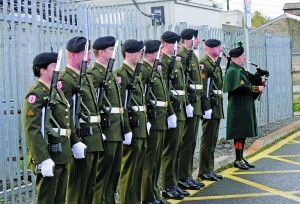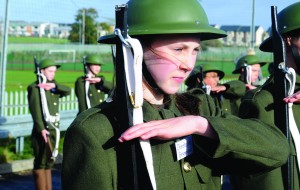As previously published in An Cosantóir in March 2013 issue.
By Cpl Paul Millar – Photos by Sgt Wayne Fitzgerald
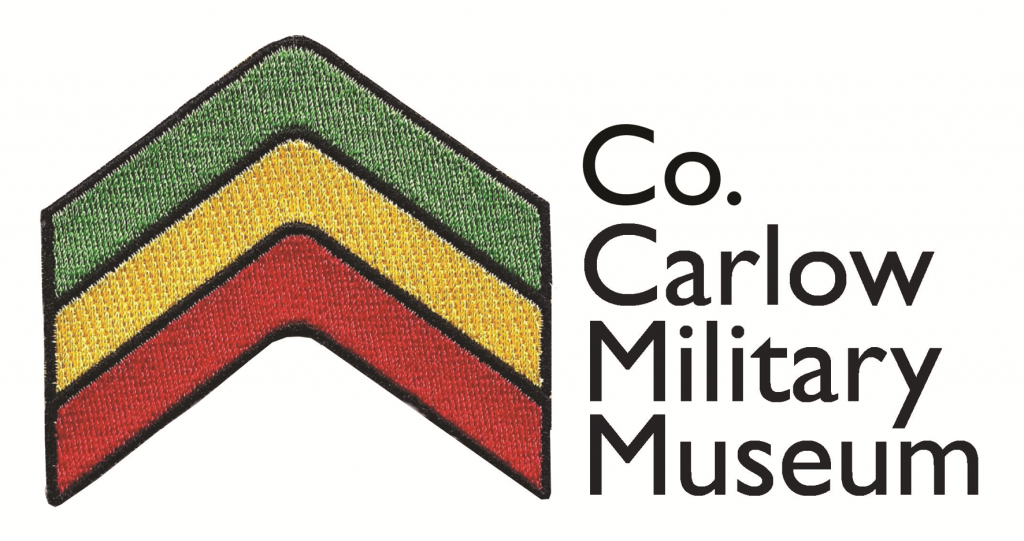 The Carlow Military Museum punches well above its weight and its story is as interesting as the stories of the 7,500 items it currently holds.
The Carlow Military Museum punches well above its weight and its story is as interesting as the stories of the 7,500 items it currently holds.
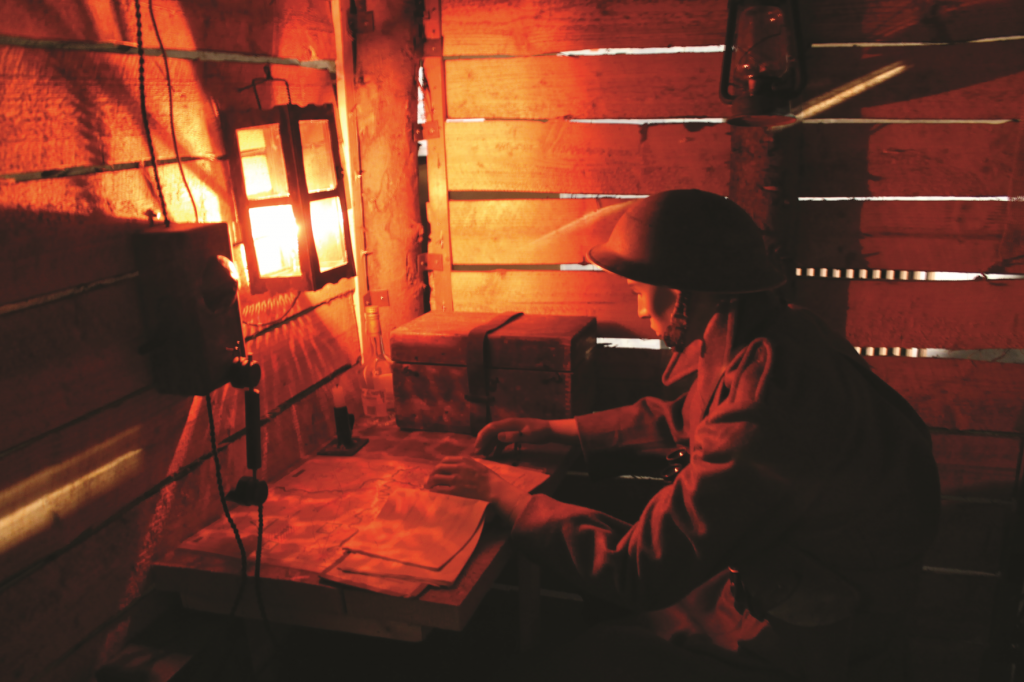 The museum began life in 1995 as a memorial to Chief Warrant Officer Donal Cunningham, a Carlow native who served with 10 Inf Bn before moving to America, who, after several tours abroad as a helicopter pilot, was killed in a training accident in Cyprus. To remember Donal, some of his former comrades in the Reserve put together a collection of his kit in their drill shed. As word grew, donations came in and it became apparent that a larger building was needed.
The museum began life in 1995 as a memorial to Chief Warrant Officer Donal Cunningham, a Carlow native who served with 10 Inf Bn before moving to America, who, after several tours abroad as a helicopter pilot, was killed in a training accident in Cyprus. To remember Donal, some of his former comrades in the Reserve put together a collection of his kit in their drill shed. As word grew, donations came in and it became apparent that a larger building was needed.
After a long search, the group was allocated St Dympna’s Church, in Carlow Hospital grounds, by the Health Board. The church is ideal for the museum as it is an historic building in its own right: the stained glass window over the altar, worth over €1.2 million, has proven to be an attraction all of its own. The move to the church in 2001 was only the beginning of many years work and dedication on behalf of the volunteers.
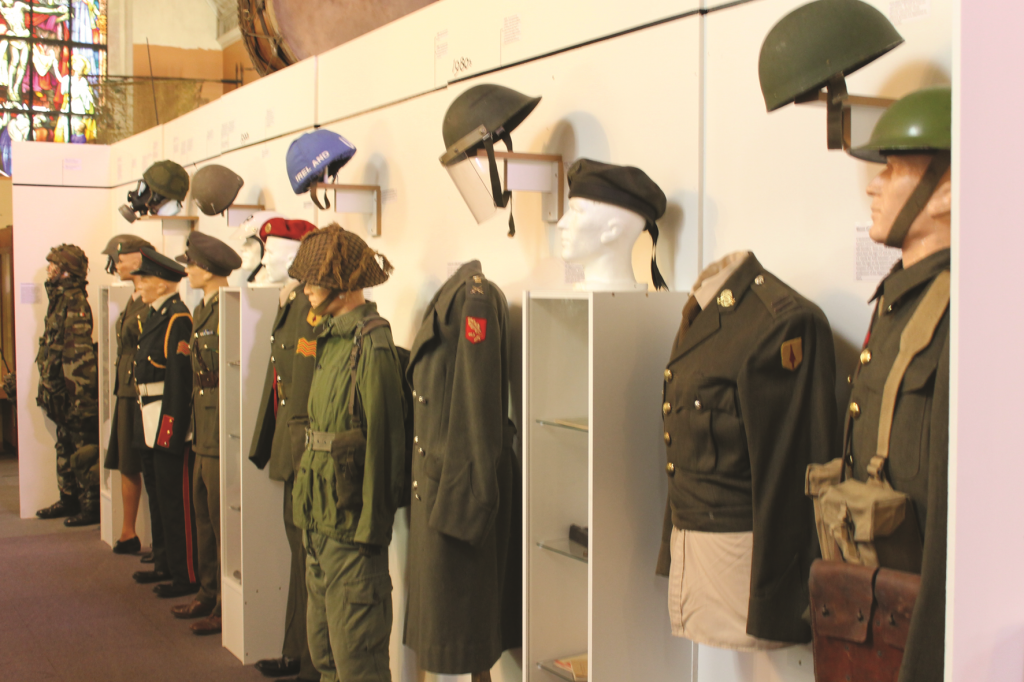 Today the military museum covers all aspects of Carlow’s warrior history, from medieval times to the 21st century. Most displays are interactive. For example, the medieval exhibits give a real sense of the weight of chain mail armour and weapons, and an appreciation of the time it took to get suited up for battle. There’s also a small area on the 1798 rebellion with a restored ‘Brown Bess’ musket holding centre stage.
Today the military museum covers all aspects of Carlow’s warrior history, from medieval times to the 21st century. Most displays are interactive. For example, the medieval exhibits give a real sense of the weight of chain mail armour and weapons, and an appreciation of the time it took to get suited up for battle. There’s also a small area on the 1798 rebellion with a restored ‘Brown Bess’ musket holding centre stage.
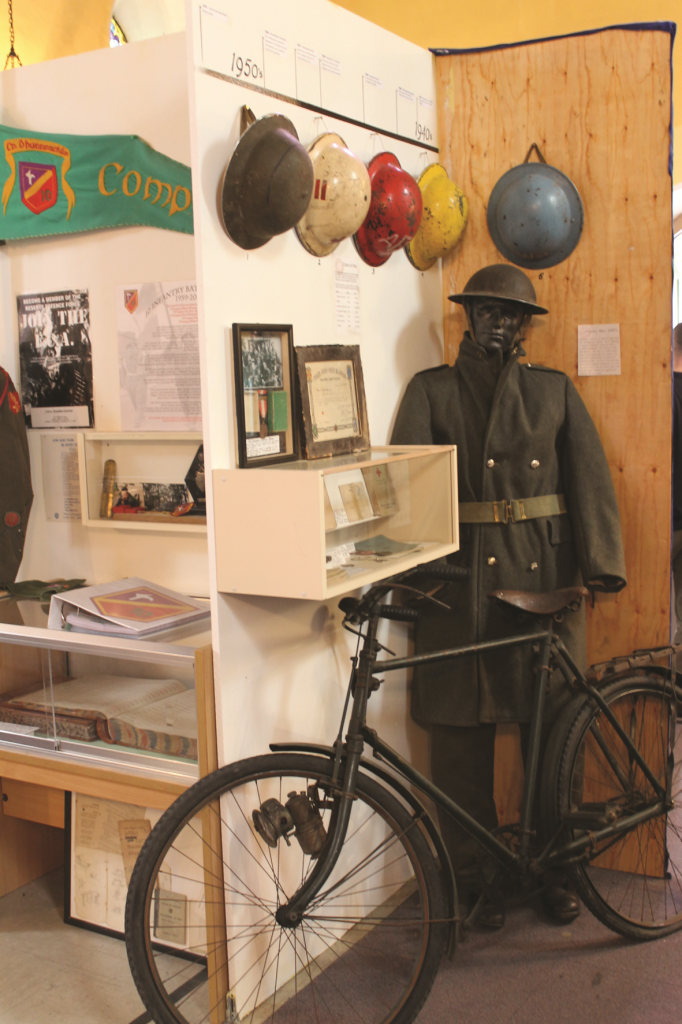 The most extensive exhibits in the museum cover the period from 1900 to 1950, with a selection of uniforms, ordnance, bayonets, kit, and an atmospheric reconstruction of a three-man observation trench overlooking no-man’s land in Ypres.
The most extensive exhibits in the museum cover the period from 1900 to 1950, with a selection of uniforms, ordnance, bayonets, kit, and an atmospheric reconstruction of a three-man observation trench overlooking no-man’s land in Ypres.
All the exhibits have a Carlow connection and were donated by people who served in various armies, or by family members.
All donations are cared for by a dedicated team of volunteers and together they highlight the personal sacrifices made by the people and families of Carlow during various wars. The museum has just received a donation of Black-and-Tan medals and even during our visit donations of various medals were made.
Taking main stage in the medal collection is the Military Star awarded to Lt Kevin Gleeson, who lost his life in the Niemba Ambush, a significant event in Defence Forces’ history. All services are represented, with an Air Corps presentation and a display for PO TJ Doyle, who died in service with LÉ Róisín.
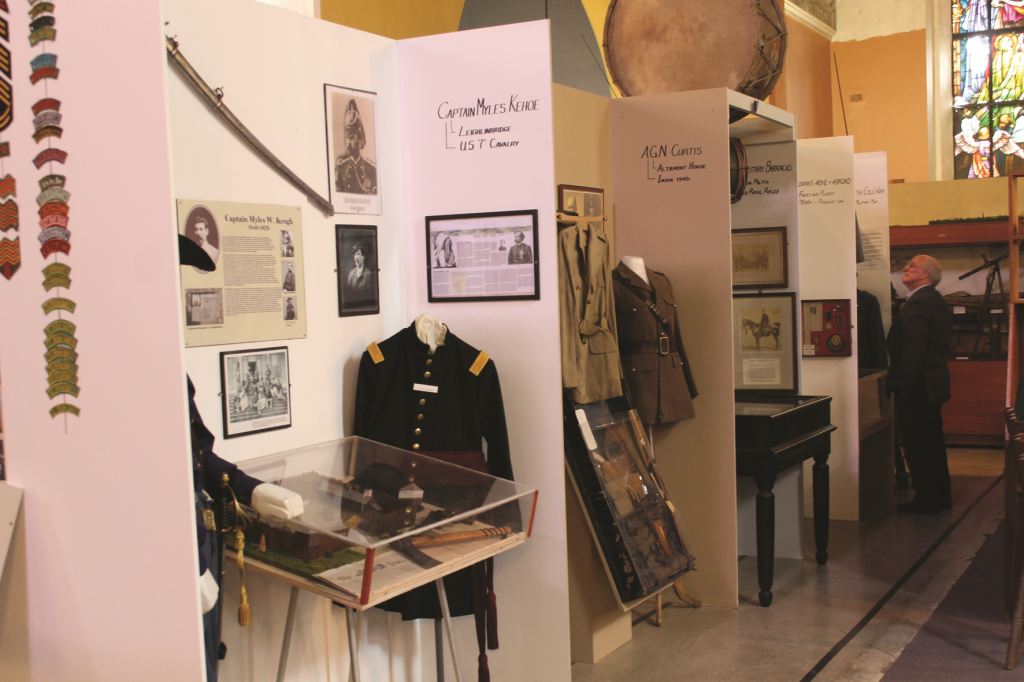 Members of 10 Inf Bn were key in advertising and collecting for the museum and the unit is now honoured with an area that celebrates its life and times.
Members of 10 Inf Bn were key in advertising and collecting for the museum and the unit is now honoured with an area that celebrates its life and times.
Many older serving or retired members of the DF would remember the various uniforms, kit, bicycles and comms equipment on display. A lot of the ordnance and kit was sourced with the help of Comdt Gerry Shinnors (Retd) and is reason enough for a visit. There’s even a collection of DF pottery complete with chamber pot!
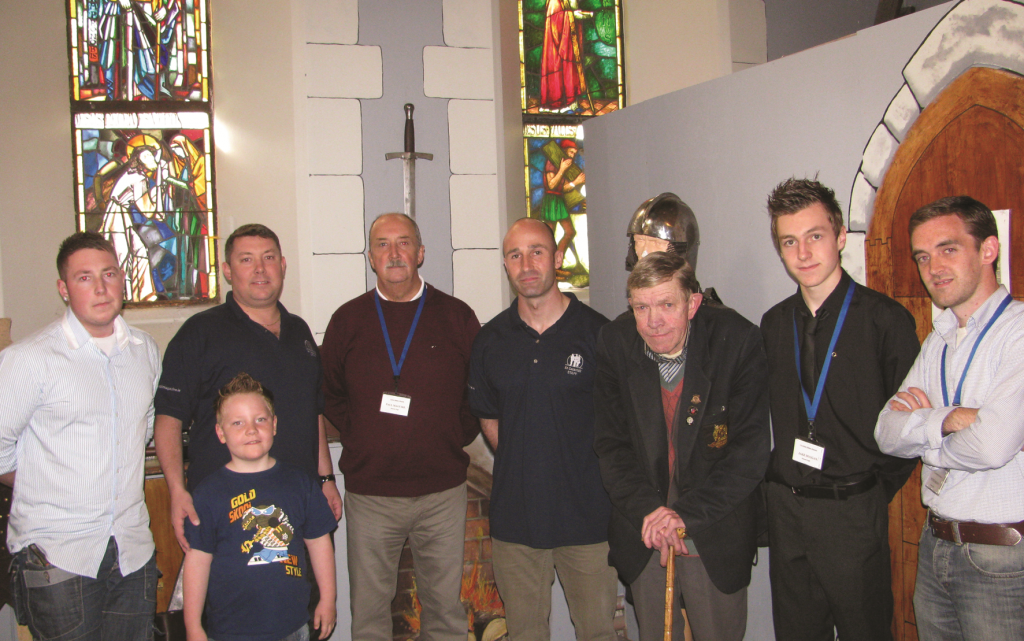
An Cosantoir Staff with Museum Staff and visitors
The work of the museum is ongoing and the staff is doing a fantastic job cataloguing current stories from today’s Carlow natives serving with a range of armies. This will become the history of the future. Whereas Carlow used to be a gateway to the Pale, now it’s a gateway to the past. A visit here would be part of an ideal day out for people interested in the best of what a small volunteer museum can offer. For more information ring 087-6904242, or visit www.countycarlowmuseum.org, or checkout their Facebook page
Read these stories and more in An Cosantóir (The Defender), The official magazine of the Irish Defence Forces – www.dfmagazine.ie
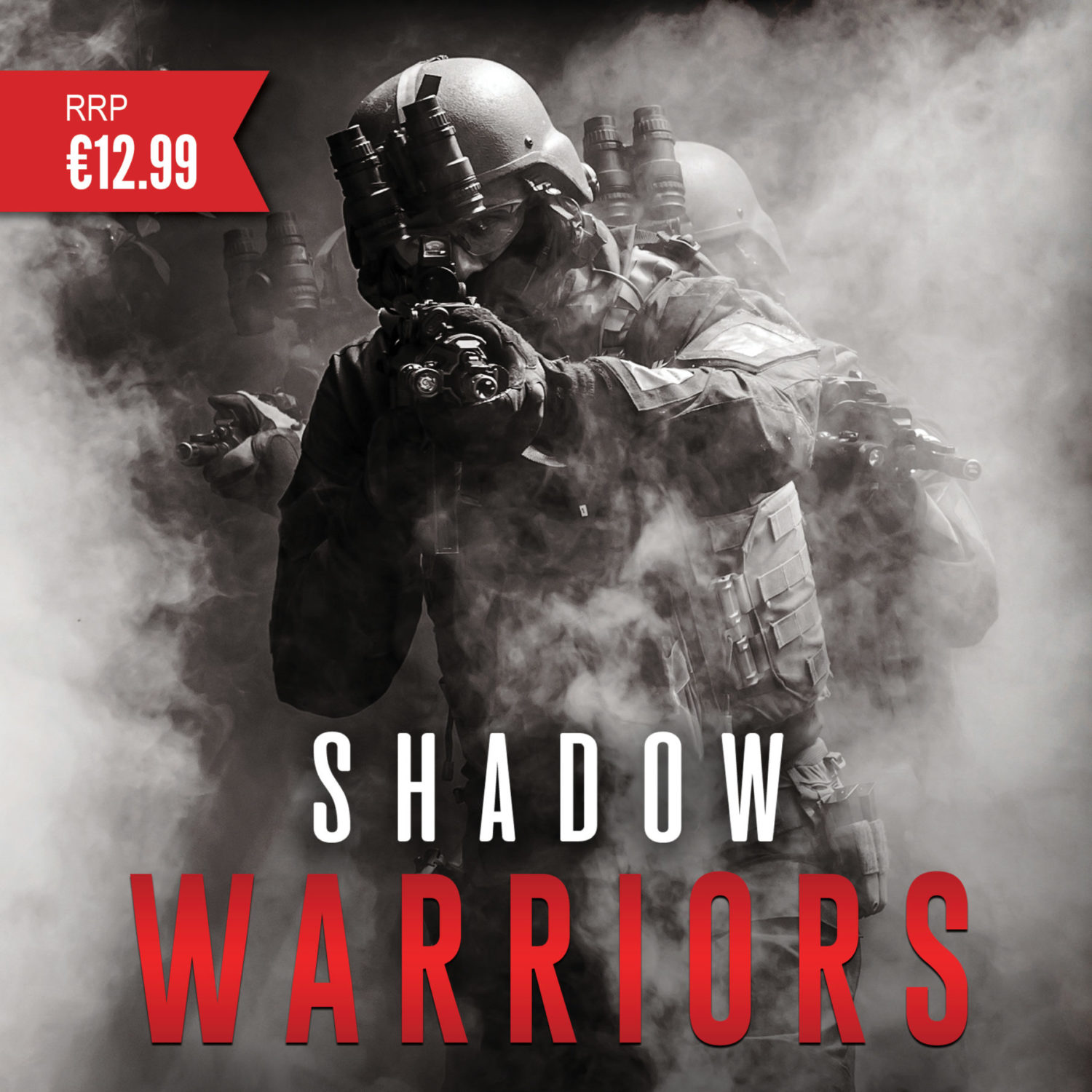
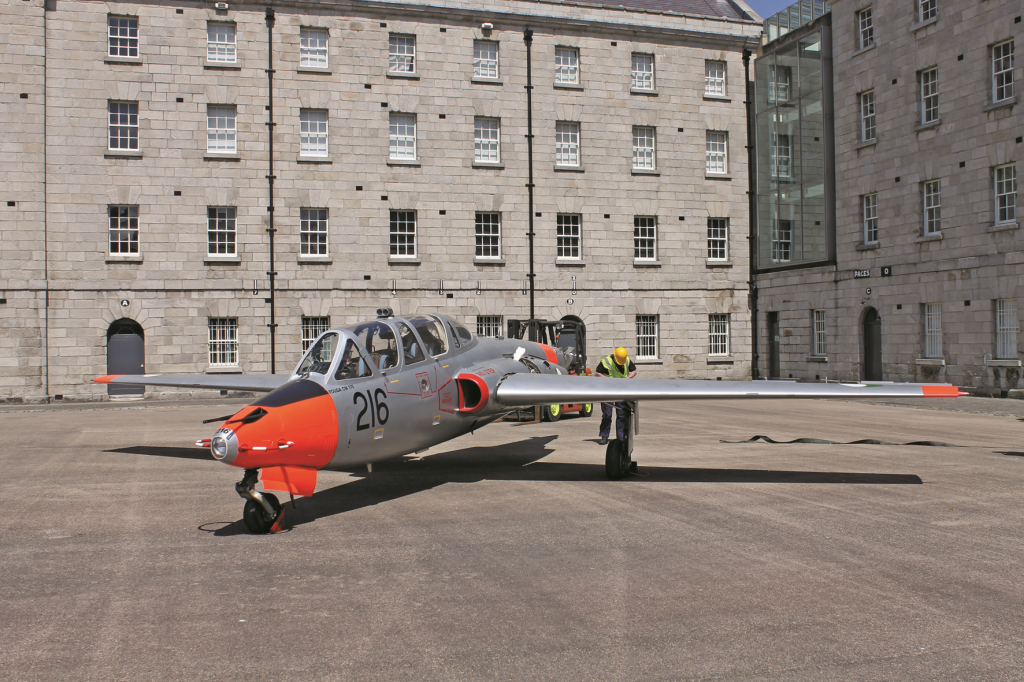 In the early hours of Monday the 5th June members of the Air Corps transported a Fouga Magister aeroplane (216) from Casement Aerodrome, Baldonnel to Clarke Square, in Collins Bks.
In the early hours of Monday the 5th June members of the Air Corps transported a Fouga Magister aeroplane (216) from Casement Aerodrome, Baldonnel to Clarke Square, in Collins Bks.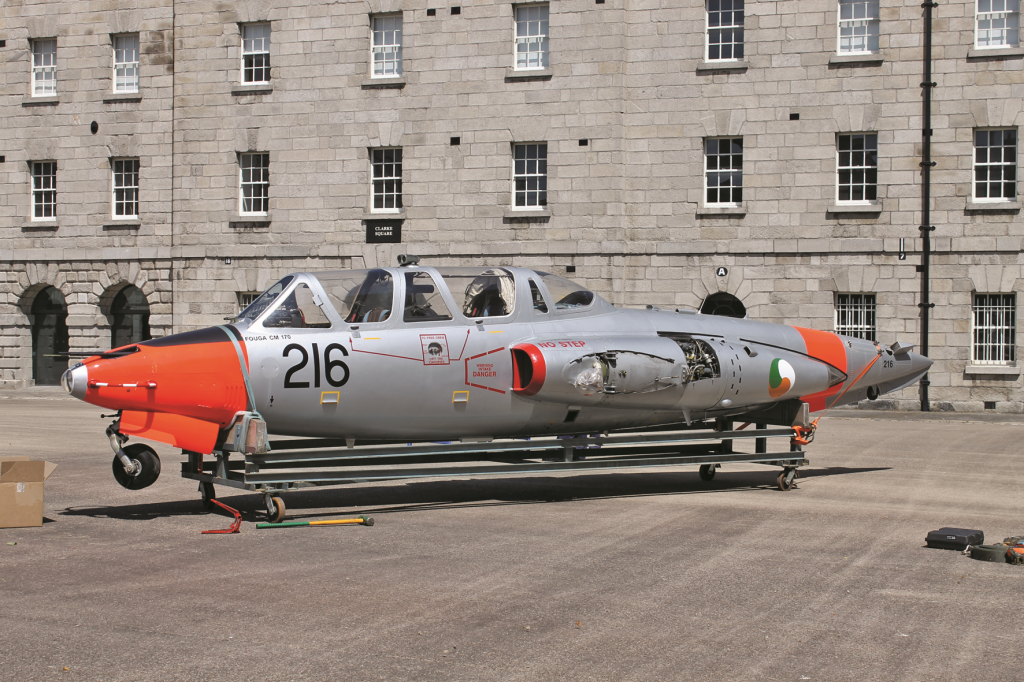 The plane was then reassembled and will be on display in the National Museum of Ireland: Decorative Arts & History and is on load for the summer months from the Air Corps Museum & Heritage Project.
The plane was then reassembled and will be on display in the National Museum of Ireland: Decorative Arts & History and is on load for the summer months from the Air Corps Museum & Heritage Project.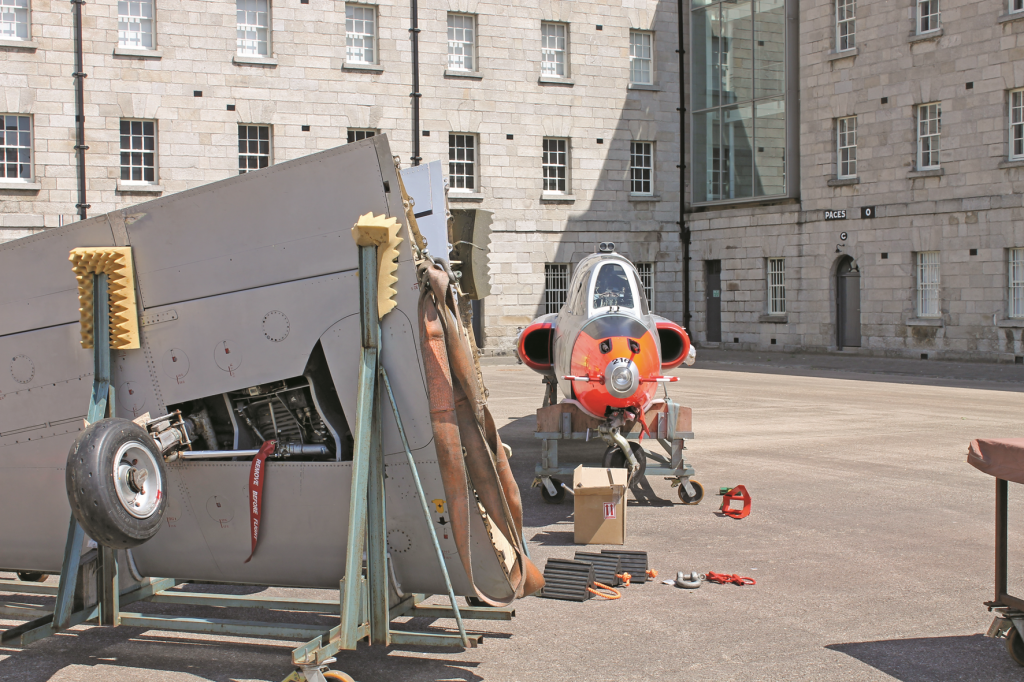 “It’s a great privilege to be displaying a Fouga Magister aircraft, we are very grateful to the Air Corps” said a member of the museum staff.
“It’s a great privilege to be displaying a Fouga Magister aircraft, we are very grateful to the Air Corps” said a member of the museum staff.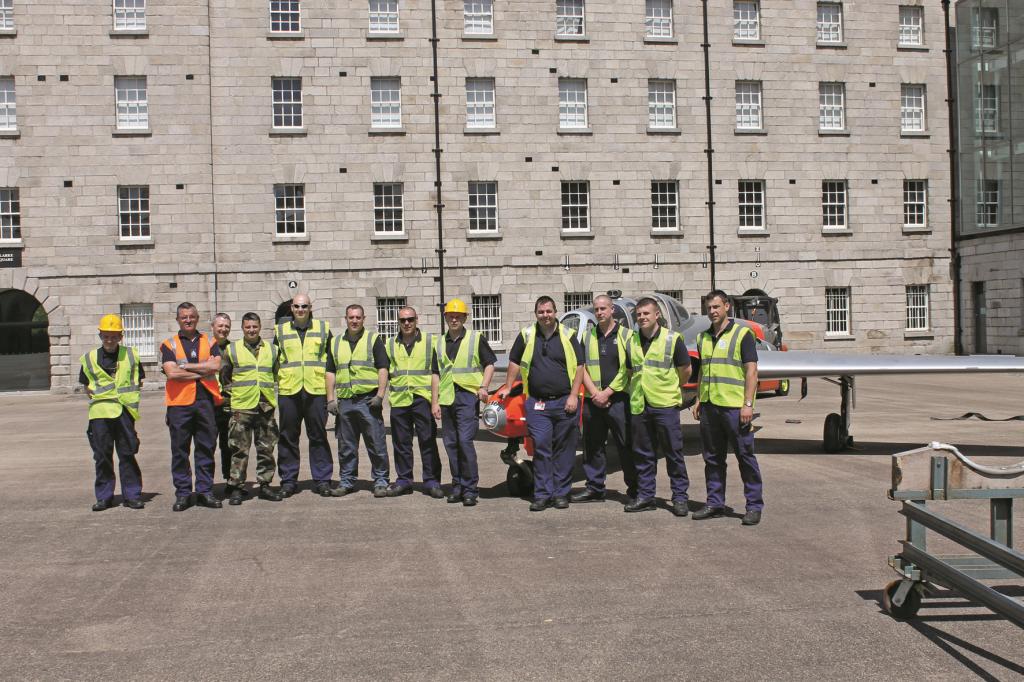 This was the first occasion on which Irish troops would experience an air attack. The Air Corps operated six Fouga Magisters (CM170-2) from 1975 to 1999, four of which equipped the Silver Swallows Aerobatic display team.
This was the first occasion on which Irish troops would experience an air attack. The Air Corps operated six Fouga Magisters (CM170-2) from 1975 to 1999, four of which equipped the Silver Swallows Aerobatic display team.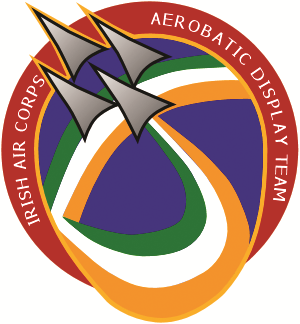
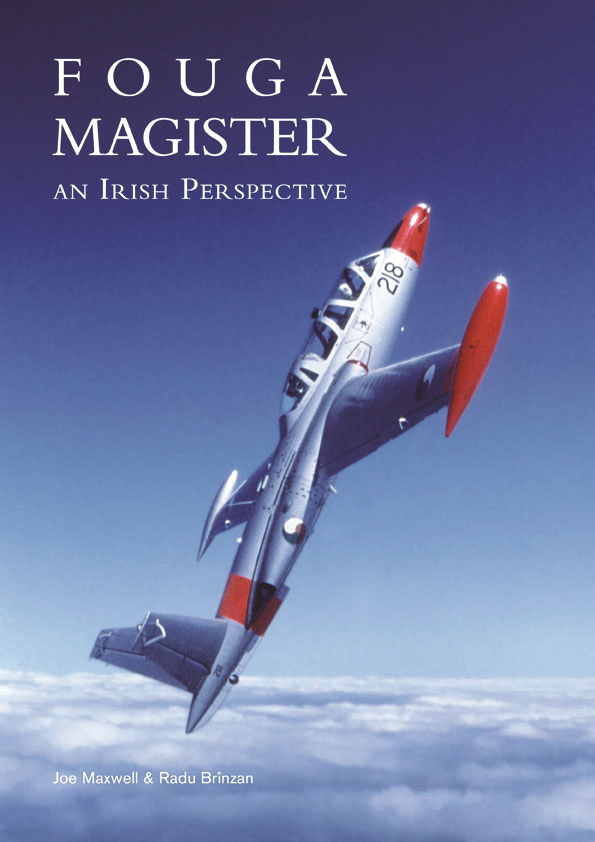 For more information and history on both the Fouga Magister and the Silver Swallows I recommend reading: Fouga Magister – An Irish Perspective by Joe Maxwell and Radu Brinzan with original drawings by Philip Avonds. ISDN: 978-0-9562624-1-7 – 108 Pages, 210 x 297 mm. Price: €22.
For more information and history on both the Fouga Magister and the Silver Swallows I recommend reading: Fouga Magister – An Irish Perspective by Joe Maxwell and Radu Brinzan with original drawings by Philip Avonds. ISDN: 978-0-9562624-1-7 – 108 Pages, 210 x 297 mm. Price: €22. 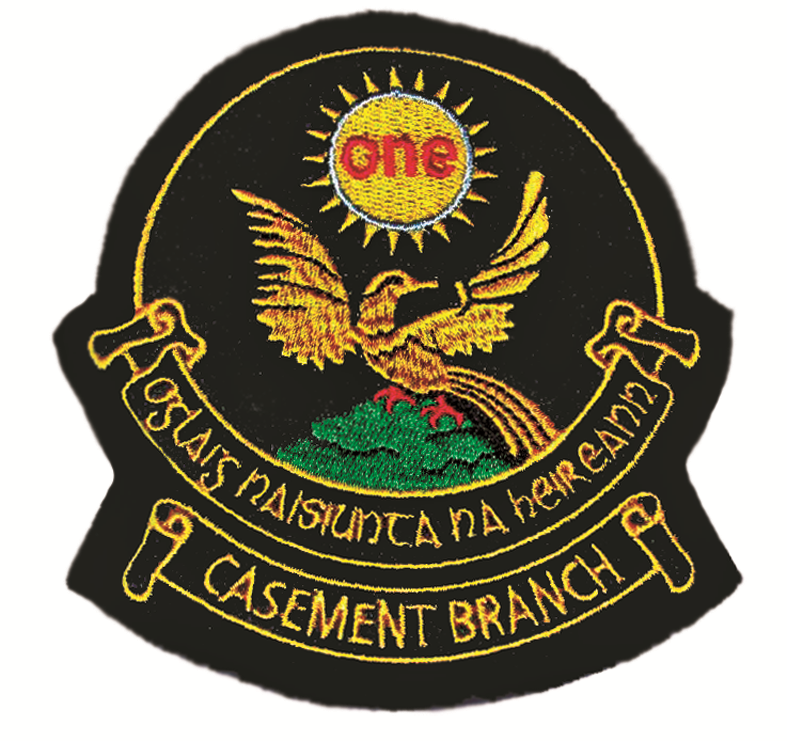 The Sir Roger Casement Branch of ONE (Organisation of National Ex-Servicemen and Women) was established in Casement Aerodrome, Baldonnel, in late 1979. The branch has grown from strength to strength over the years mainly due to the efforts of its members and the great relationship it has had since its foundation with successive GOCs and serving Air Corps personnel.
The Sir Roger Casement Branch of ONE (Organisation of National Ex-Servicemen and Women) was established in Casement Aerodrome, Baldonnel, in late 1979. The branch has grown from strength to strength over the years mainly due to the efforts of its members and the great relationship it has had since its foundation with successive GOCs and serving Air Corps personnel.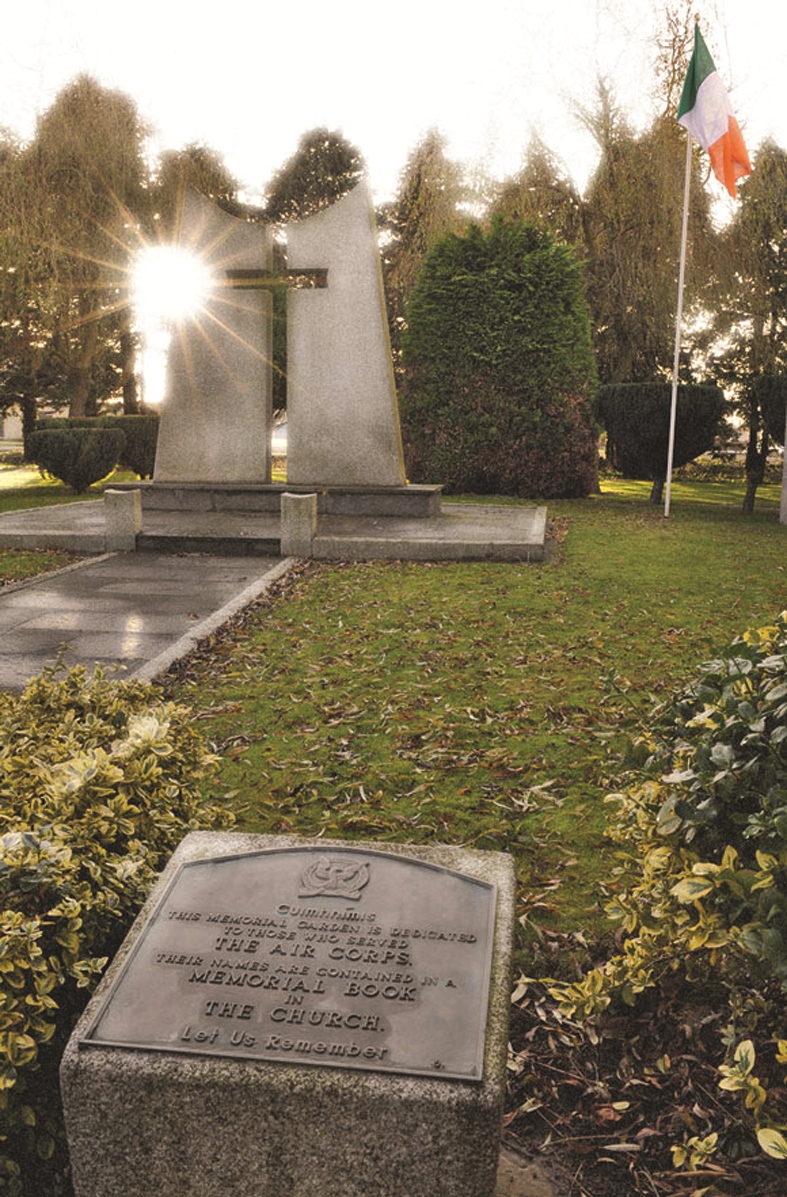
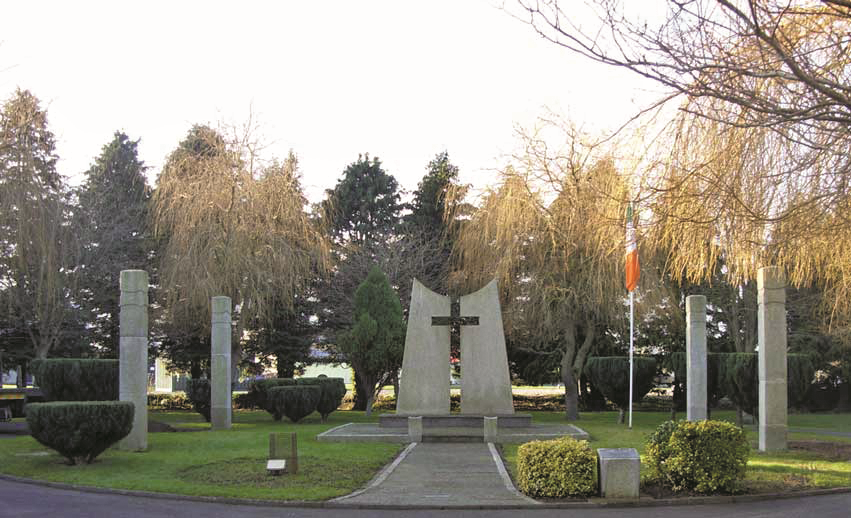
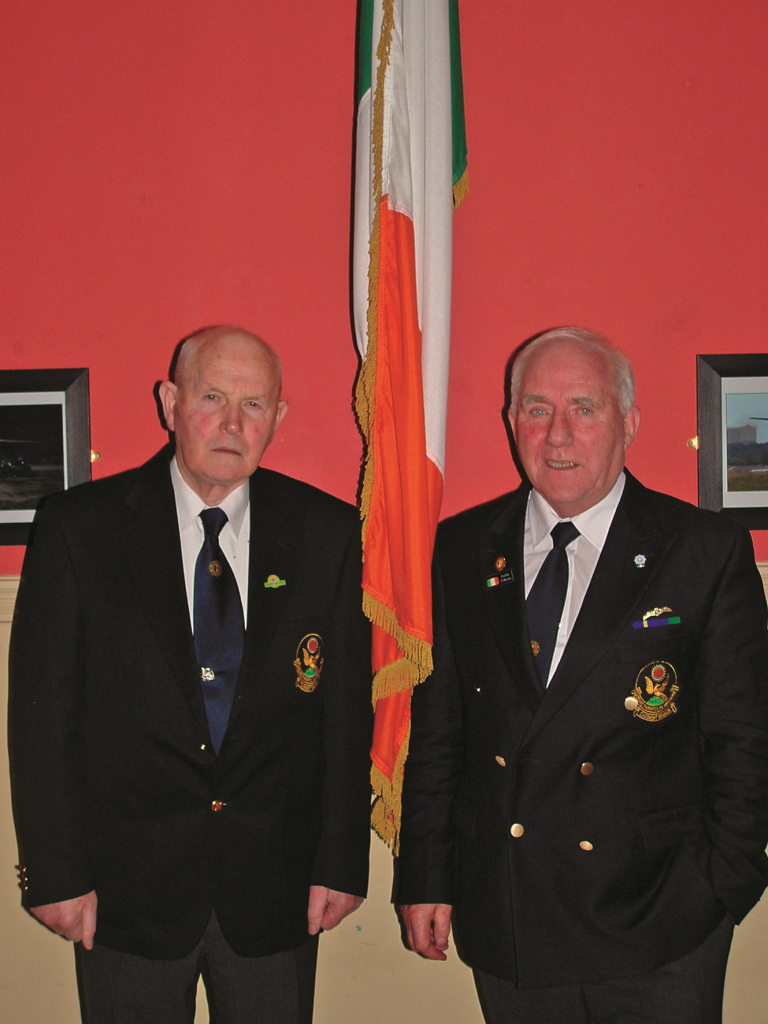
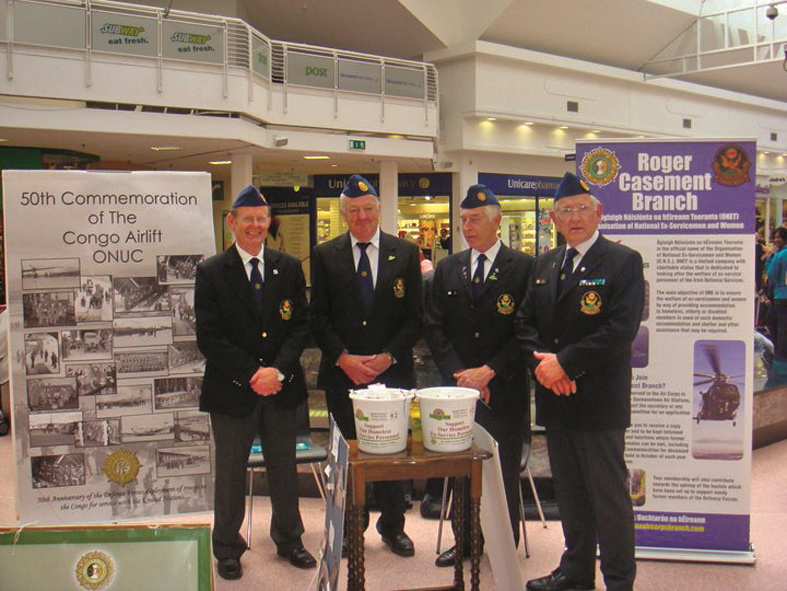
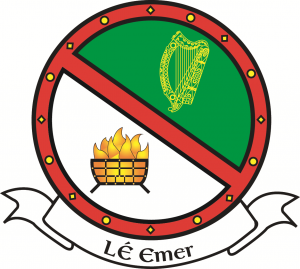 It was a cold, early start for us on Dun Laoghaire’s east pier, where our escort picked us up in a RIB (rigid inflatable boat) powered by twin Yamaha 400 outboard engines. We were given a safety brief, which was precise and to the point – life jackets were fitted and its safety devices pointed out – “Sit forward, at all times keep your arms and feet inside, and don’t let go” – and then we were off.
It was a cold, early start for us on Dun Laoghaire’s east pier, where our escort picked us up in a RIB (rigid inflatable boat) powered by twin Yamaha 400 outboard engines. We were given a safety brief, which was precise and to the point – life jackets were fitted and its safety devices pointed out – “Sit forward, at all times keep your arms and feet inside, and don’t let go” – and then we were off.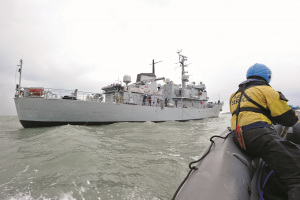 The RIB parted the emerald waters of the Irish Sea as we made our way out into Dublin Bay to LÉ Emer where the crew awaited our arrival.
The RIB parted the emerald waters of the Irish Sea as we made our way out into Dublin Bay to LÉ Emer where the crew awaited our arrival.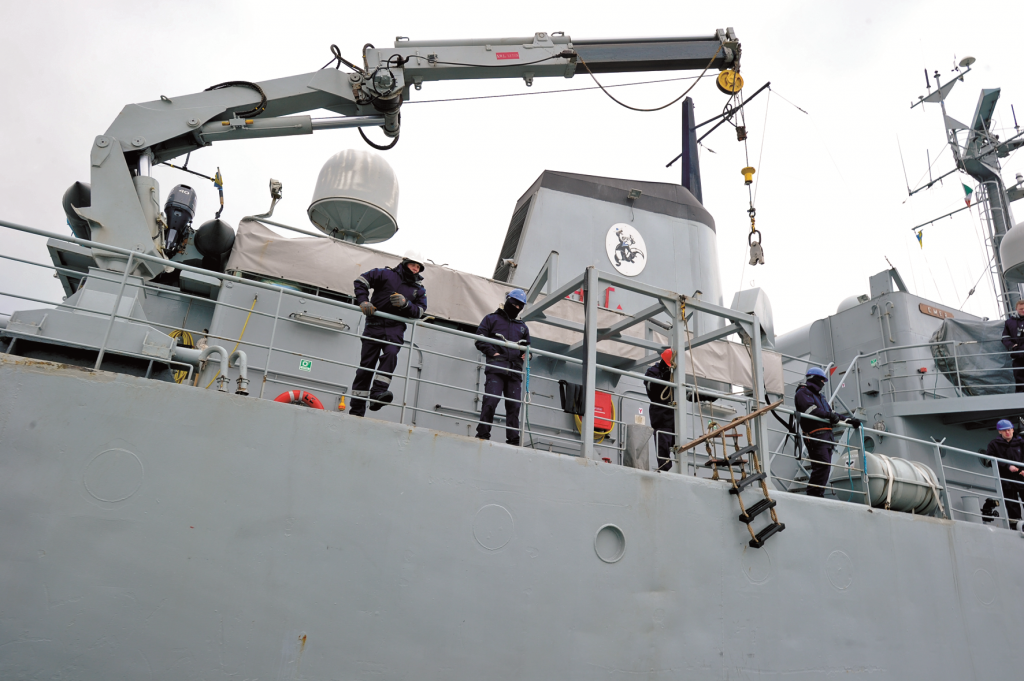 LÉ Emer still looked really impressive as we drew alongside. The RIB was hoisted aboard and we were very warmly greeted by the ship’s executive officer and 2 i/c, Lt (NS) Gavin McCarthy, who gave us another safety brief as we removed our life jackets and wets. We were also informed that we would be told when and where we could take photos, as much of the ship’s operations and equipment are classified.
LÉ Emer still looked really impressive as we drew alongside. The RIB was hoisted aboard and we were very warmly greeted by the ship’s executive officer and 2 i/c, Lt (NS) Gavin McCarthy, who gave us another safety brief as we removed our life jackets and wets. We were also informed that we would be told when and where we could take photos, as much of the ship’s operations and equipment are classified.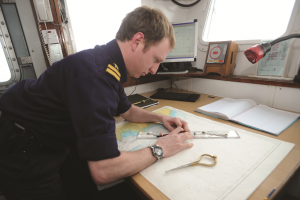
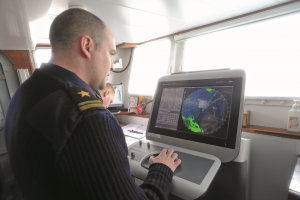
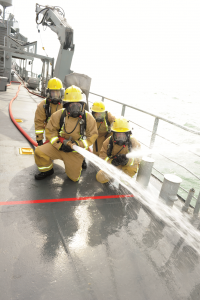 Later the ship’s crew gave us a fire-fighting demonstration and a display of a boarding party’s equipment and tactics.
Later the ship’s crew gave us a fire-fighting demonstration and a display of a boarding party’s equipment and tactics.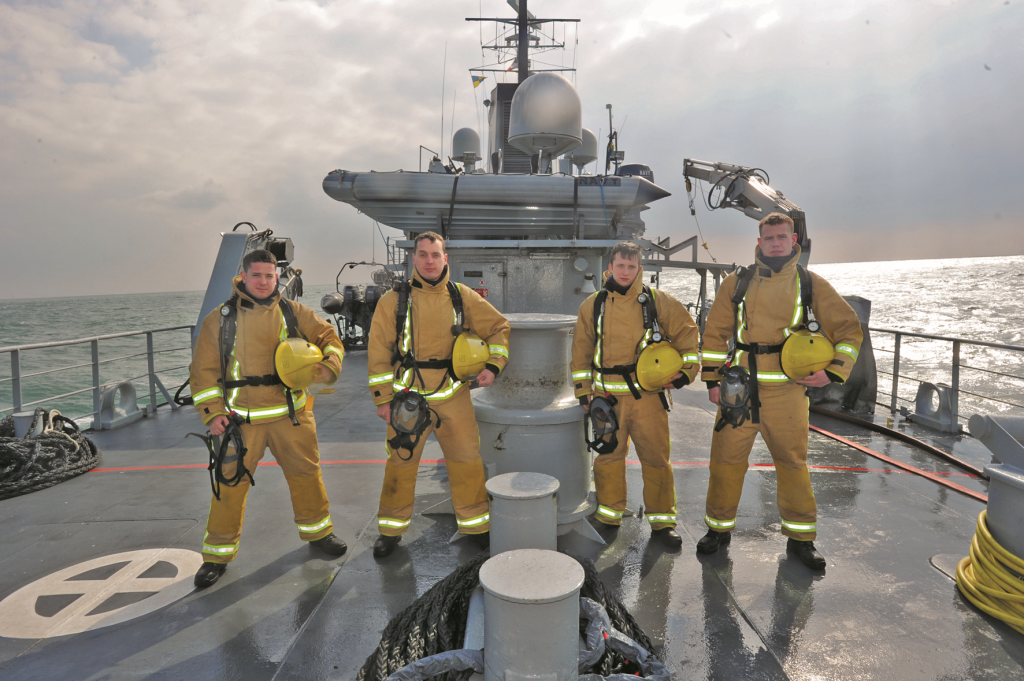
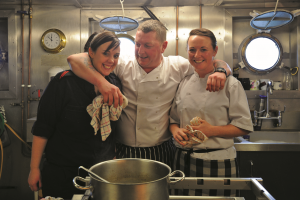
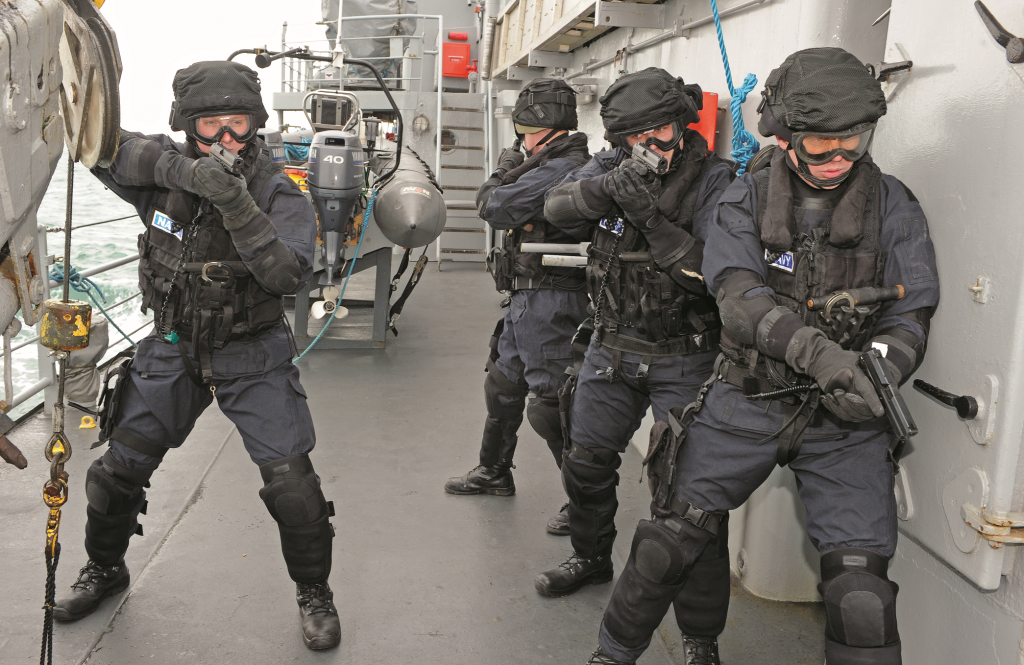 In 2012 the Naval Service patrolled 132,000 sq miles of sea (approx four times the land mass of Ireland, representing 15% of Europe’s fisheries) during their 1,480 patrol days. They boarded and inspected 1,325 fishing vessels from Ireland, United Kingdom, France, Spain, Germany, Netherlands, Norway, Russia, Lithuania, Belgium, Portugal, Denmark and the Faroes. 40 fishing vessels from Ireland, UK, Spain, France and Lithuania were warned for 53 infringements and they made 20 detentions for alleged infringements of fishing regulations. The Naval Service Diving Section is the states primary dive agents and was called out on 79 operations. They were involved in 14 separate Search and Recovery operations following requests from the Coastguard and An Garda Síochána lasting 49 days.
In 2012 the Naval Service patrolled 132,000 sq miles of sea (approx four times the land mass of Ireland, representing 15% of Europe’s fisheries) during their 1,480 patrol days. They boarded and inspected 1,325 fishing vessels from Ireland, United Kingdom, France, Spain, Germany, Netherlands, Norway, Russia, Lithuania, Belgium, Portugal, Denmark and the Faroes. 40 fishing vessels from Ireland, UK, Spain, France and Lithuania were warned for 53 infringements and they made 20 detentions for alleged infringements of fishing regulations. The Naval Service Diving Section is the states primary dive agents and was called out on 79 operations. They were involved in 14 separate Search and Recovery operations following requests from the Coastguard and An Garda Síochána lasting 49 days.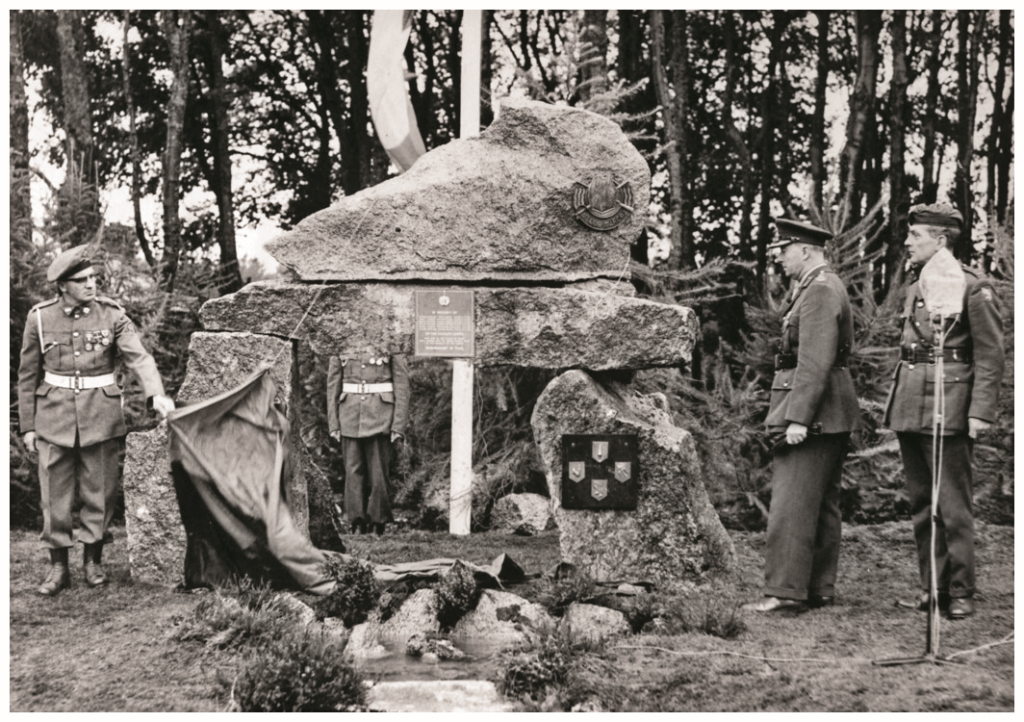
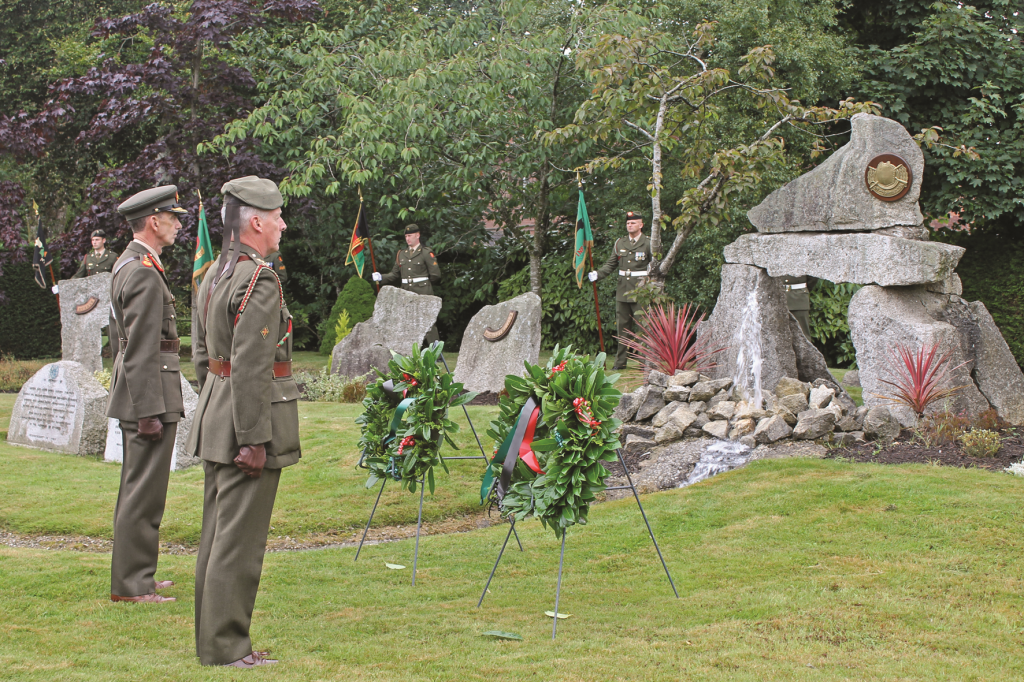
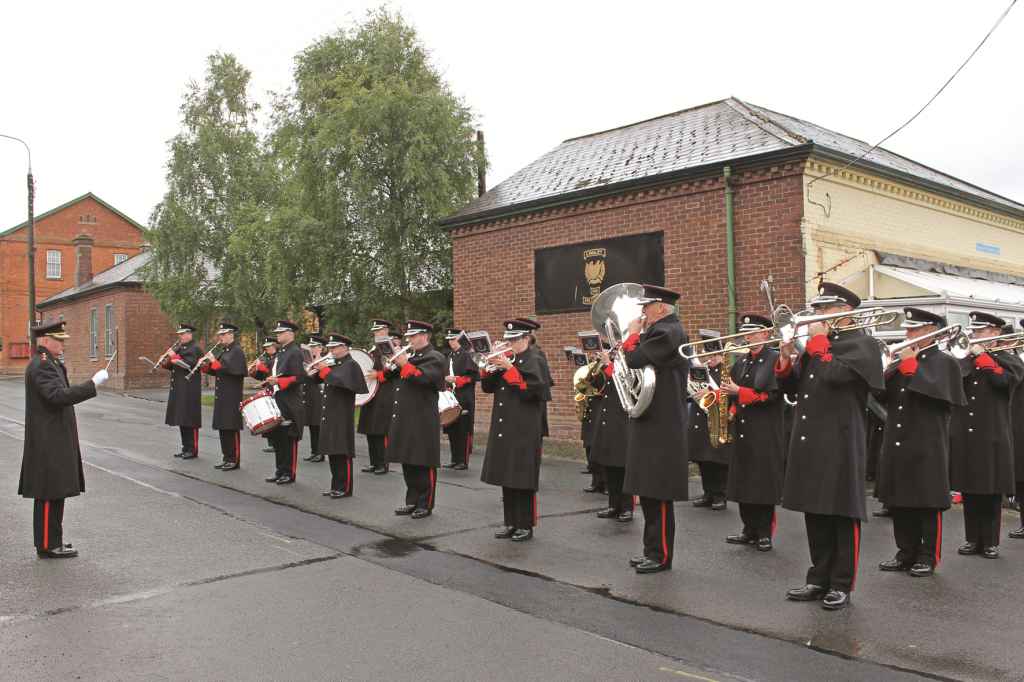
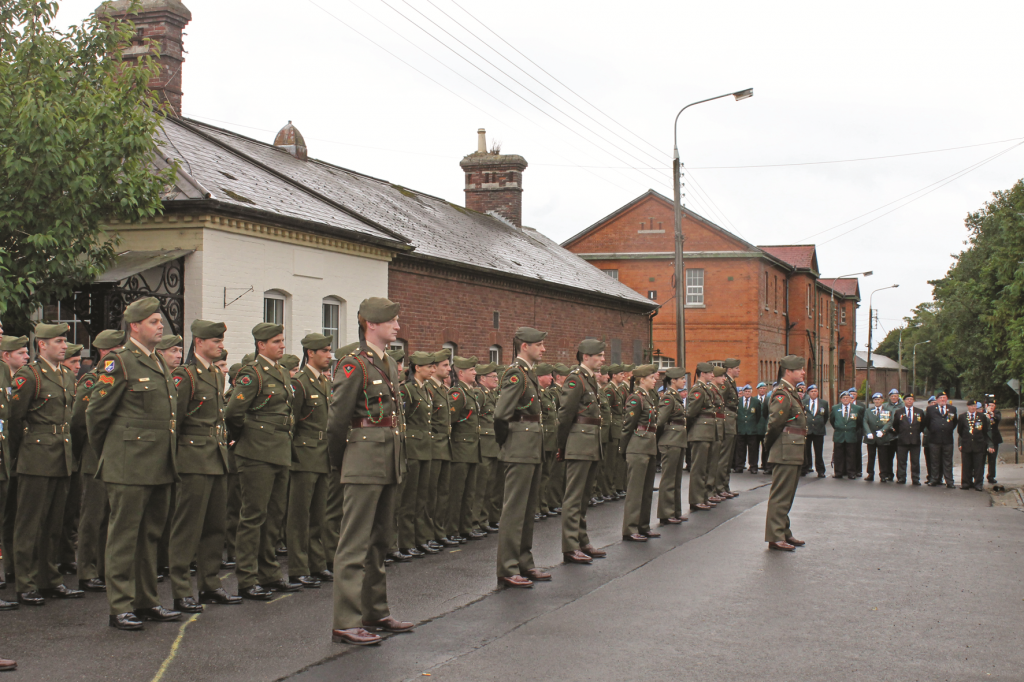
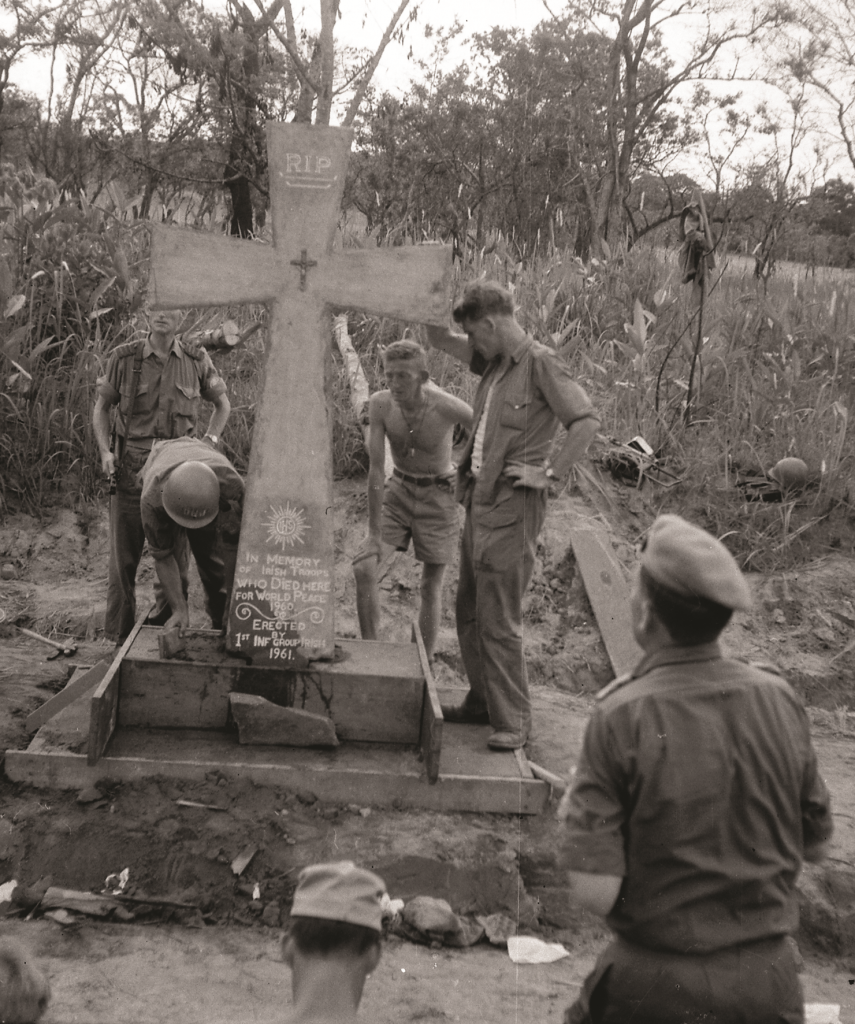
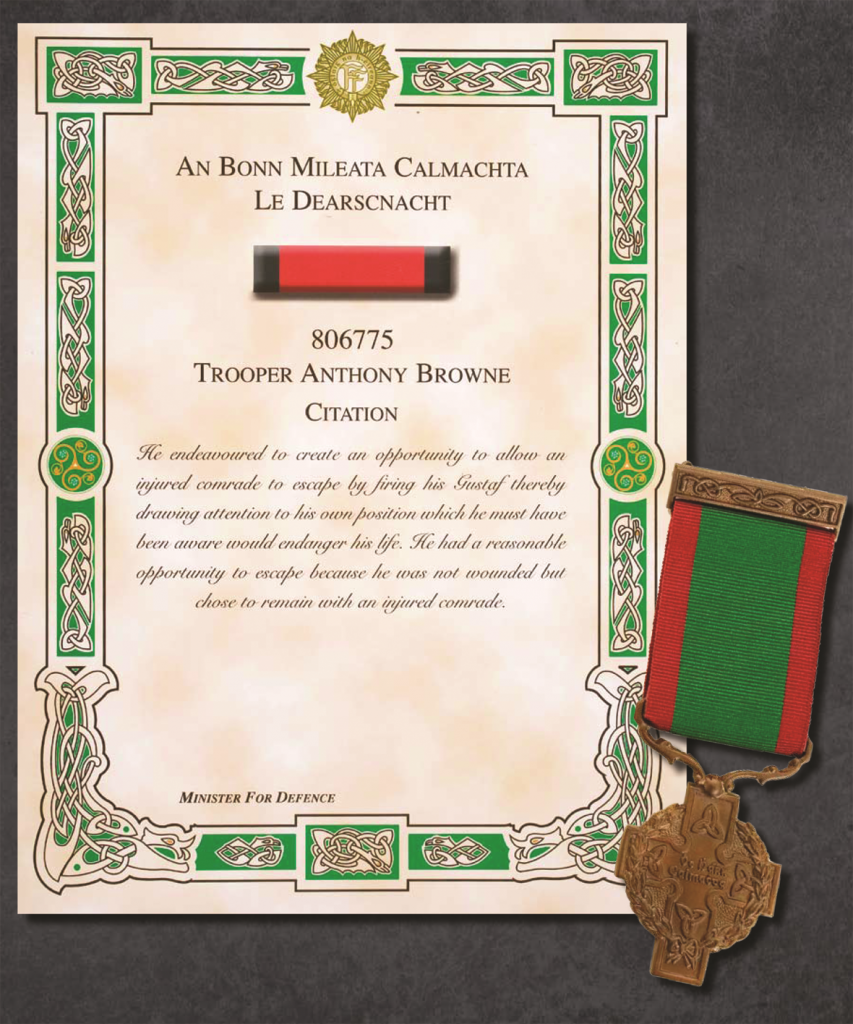
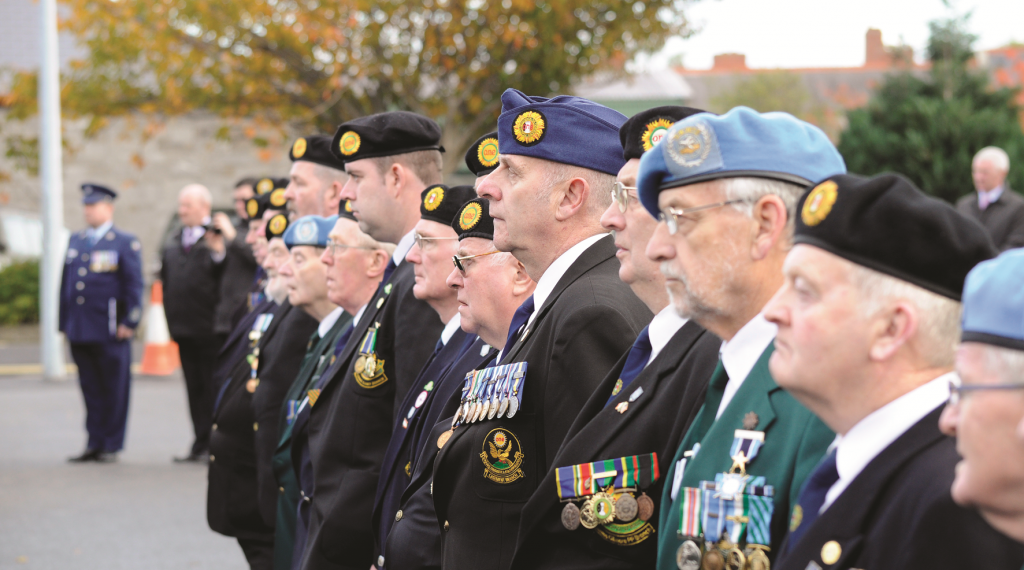
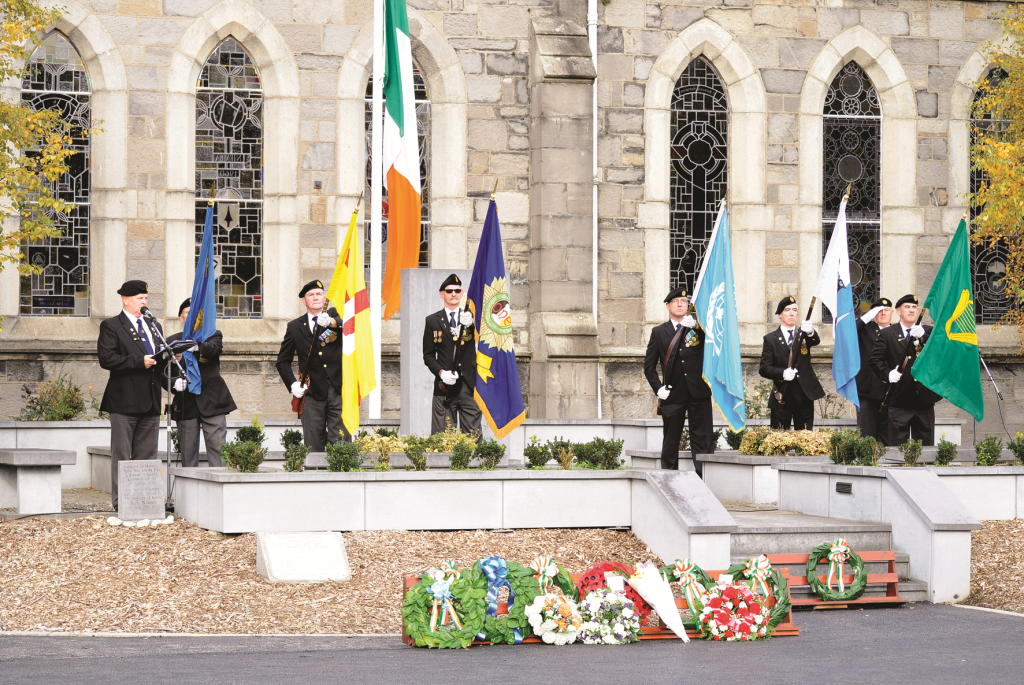
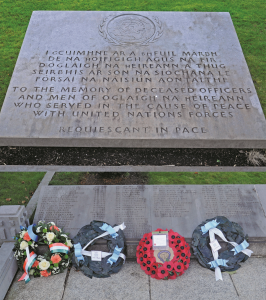
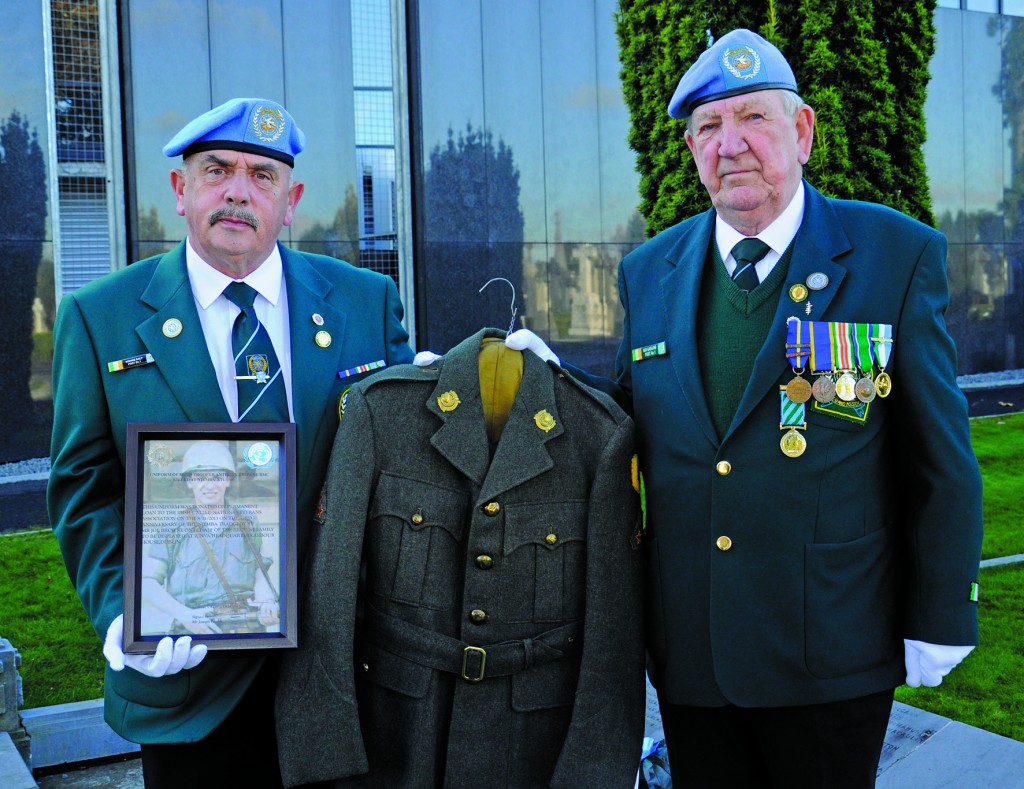
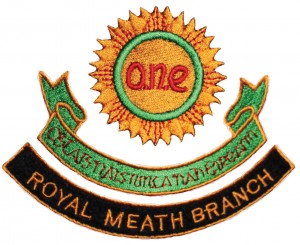 On Tuesday April 1st, An Cosantóir met with one of the newest branches of the Organisation of National Ex-Servicemen and Women (ONE), the Royal Meath, situated in the north Leinster area.
On Tuesday April 1st, An Cosantóir met with one of the newest branches of the Organisation of National Ex-Servicemen and Women (ONE), the Royal Meath, situated in the north Leinster area.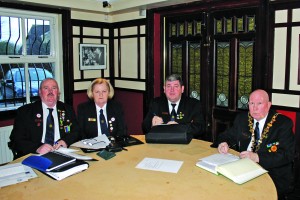 Despite being in existence for just over a year, the Royal Meath Branch has taken part in many events, and not just ONE events; others have included the French Foreign Legion Day, Anzac Day, and the Royal British Legion. The Branch has also built up a great relationship with the Thurles Memorial Trust, with Royal Meath members being made honorary members of the Trust.
Despite being in existence for just over a year, the Royal Meath Branch has taken part in many events, and not just ONE events; others have included the French Foreign Legion Day, Anzac Day, and the Royal British Legion. The Branch has also built up a great relationship with the Thurles Memorial Trust, with Royal Meath members being made honorary members of the Trust.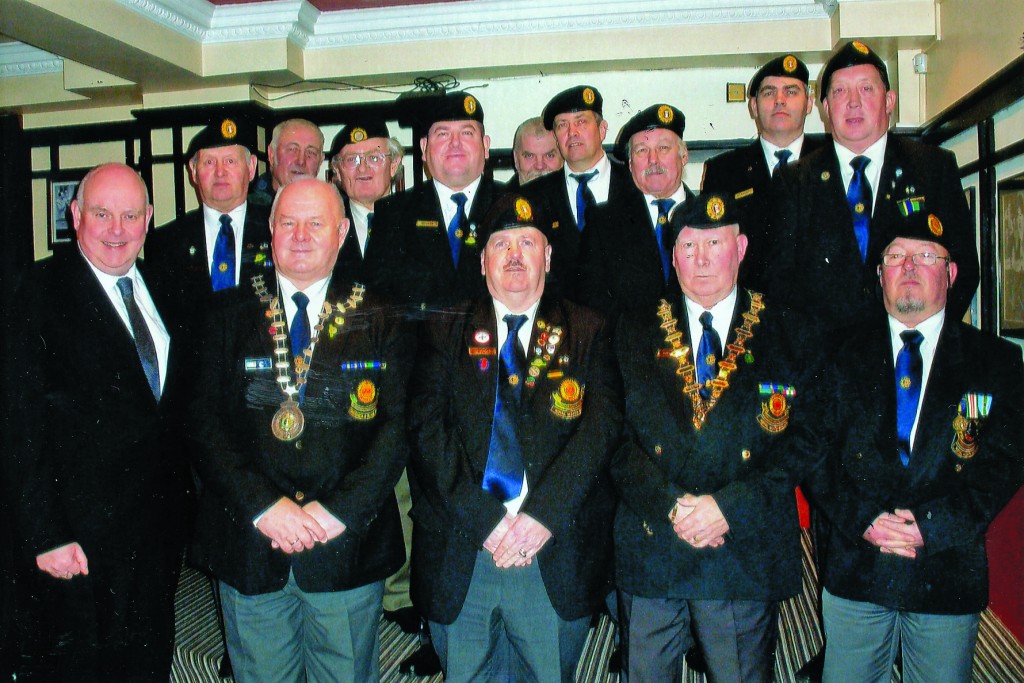
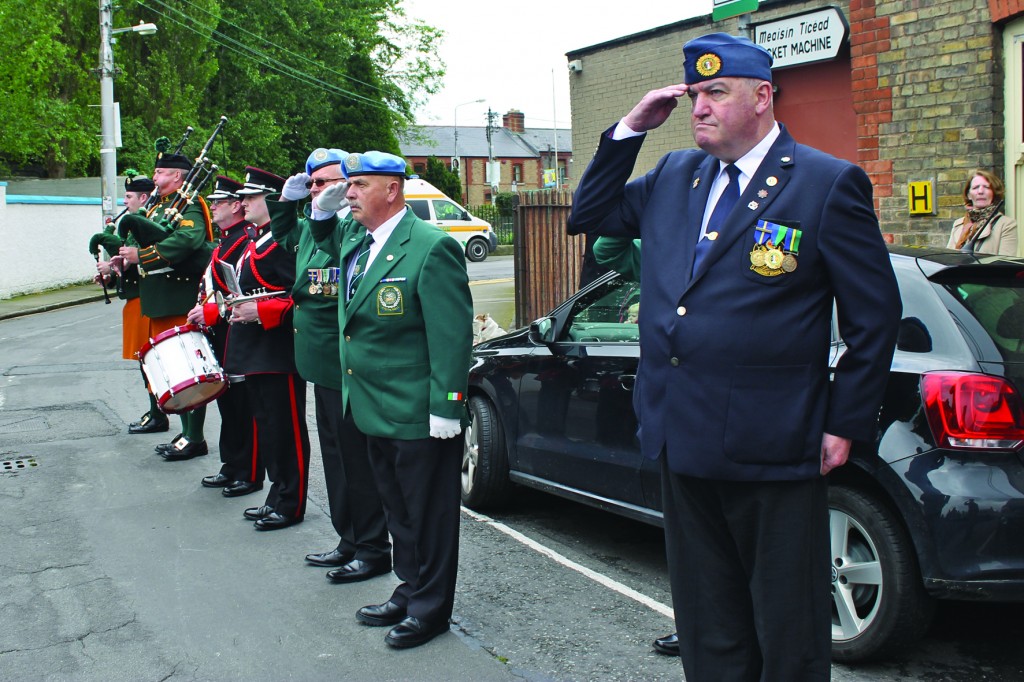 On May 25th 2014, the Irish United Nations Veterans Association (IUNVA) held their 16th annual wreath-laying ceremony in remembrance of all Defence Forces personnel, members of An Garda Síochána and civilian personnel who died on UN peacekeeping missions throughout the world. The ceremony was held at the memorial garden in IUNVA’s HQ on Mount Temple Road, behind Arbour Hill Church and Cemetery, where a memorial stone is inscribed with the names of those who sacrificed everything in the cause of world peace. The garden was opened by President Mary McAleese on November 8th 1998.
On May 25th 2014, the Irish United Nations Veterans Association (IUNVA) held their 16th annual wreath-laying ceremony in remembrance of all Defence Forces personnel, members of An Garda Síochána and civilian personnel who died on UN peacekeeping missions throughout the world. The ceremony was held at the memorial garden in IUNVA’s HQ on Mount Temple Road, behind Arbour Hill Church and Cemetery, where a memorial stone is inscribed with the names of those who sacrificed everything in the cause of world peace. The garden was opened by President Mary McAleese on November 8th 1998.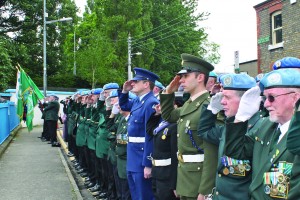 What makes this year special is that it is the 25th anniversary of the formation of IUNVA. It also marks the 50th anniversary of the formation of UNFICYP in April 1964, when 606 members of 40 Inf Bn arrived in Cyprus, and the 50th anniversary of the ending of Irish involvement in the Congo when 2 Inf Gp left ONUC in June of the same year.
What makes this year special is that it is the 25th anniversary of the formation of IUNVA. It also marks the 50th anniversary of the formation of UNFICYP in April 1964, when 606 members of 40 Inf Bn arrived in Cyprus, and the 50th anniversary of the ending of Irish involvement in the Congo when 2 Inf Gp left ONUC in June of the same year.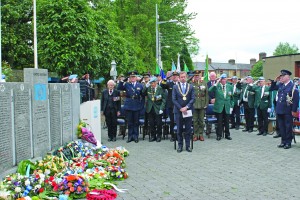 DCOS Sp, Rear-Admiral Mark Mellett DSM, addressed the parade, thanking IUNVA for making sure the memories and names of all those that made the ultimate sacrifice for world peace are remembered. Fr Pat Mernagh CF and the Very Rev John Marsden, Dean of Kildare, led those present in prayers and then Airman Michael Whelan read out his poem ‘Fallen Friends’. The roll of honour was then read out by members of IUNVA posts from around the country.
DCOS Sp, Rear-Admiral Mark Mellett DSM, addressed the parade, thanking IUNVA for making sure the memories and names of all those that made the ultimate sacrifice for world peace are remembered. Fr Pat Mernagh CF and the Very Rev John Marsden, Dean of Kildare, led those present in prayers and then Airman Michael Whelan read out his poem ‘Fallen Friends’. The roll of honour was then read out by members of IUNVA posts from around the country.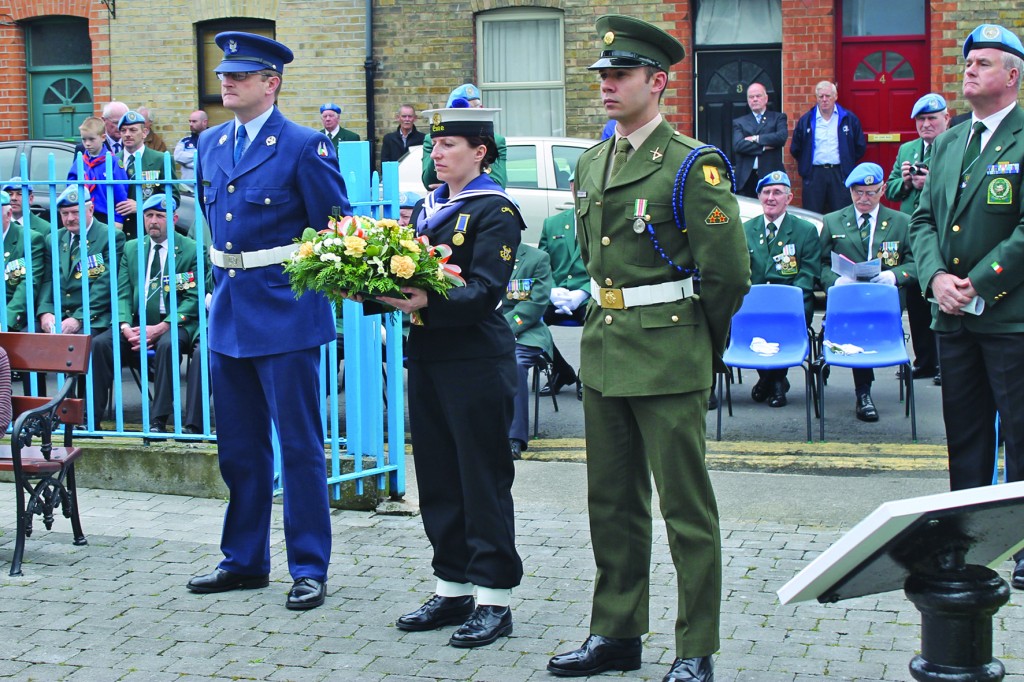
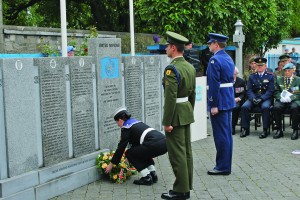 Wreaths were then laid on behalf of the Defence Forces by Airman Michael Whelan (Air Corps), Pte Tadgh Luby (7 Inf Bn) and A/Sea Michelle Thompson (Dublin Unit, NSR). A wreath was also laid by representatives of other armed forces.
Wreaths were then laid on behalf of the Defence Forces by Airman Michael Whelan (Air Corps), Pte Tadgh Luby (7 Inf Bn) and A/Sea Michelle Thompson (Dublin Unit, NSR). A wreath was also laid by representatives of other armed forces.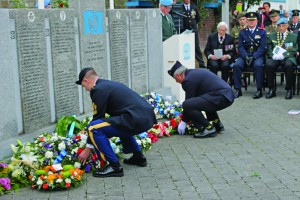 The day went very well and although it was such a solemn occasion it was very uplifting with everyone enjoying the parade and the opportunity to remember lost loved ones in good company.
The day went very well and although it was such a solemn occasion it was very uplifting with everyone enjoying the parade and the opportunity to remember lost loved ones in good company.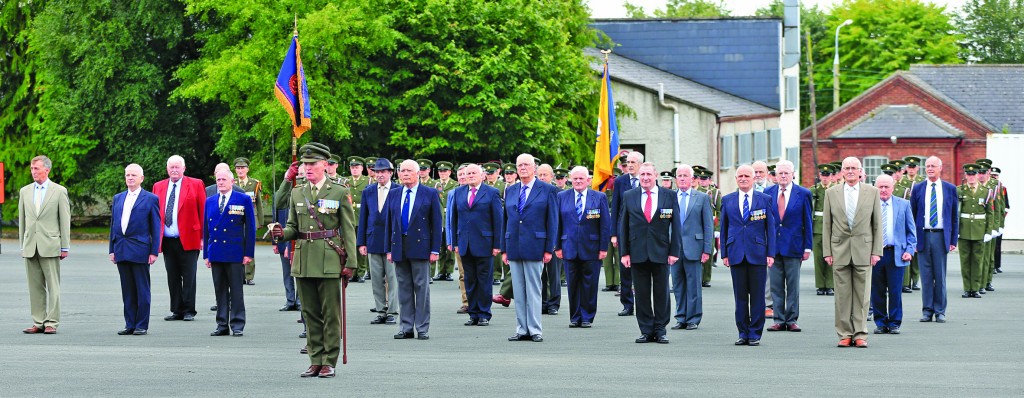 On 2nd September 2014 the first Defence Forces Veterans’ Day Parade was held on McDermott Square, DFTC, Curragh Camp. Many veterans from around the country joined under their respective flags. In attendance were the Irish United Nations Veterans Association (IUNVA), the Organisation of Ex-Servicemen and Women (ONE), along with the Association of Retired Commissioned Officers (ARCO). The Minister for Defence, Mr Simon Coveney TD, officially attended and was accompanied by the Chief of Staff, Lt Gen Conor O’Boyle and Brig Gen Seamus Ó’Giolláin, GOC DFTC.
On 2nd September 2014 the first Defence Forces Veterans’ Day Parade was held on McDermott Square, DFTC, Curragh Camp. Many veterans from around the country joined under their respective flags. In attendance were the Irish United Nations Veterans Association (IUNVA), the Organisation of Ex-Servicemen and Women (ONE), along with the Association of Retired Commissioned Officers (ARCO). The Minister for Defence, Mr Simon Coveney TD, officially attended and was accompanied by the Chief of Staff, Lt Gen Conor O’Boyle and Brig Gen Seamus Ó’Giolláin, GOC DFTC.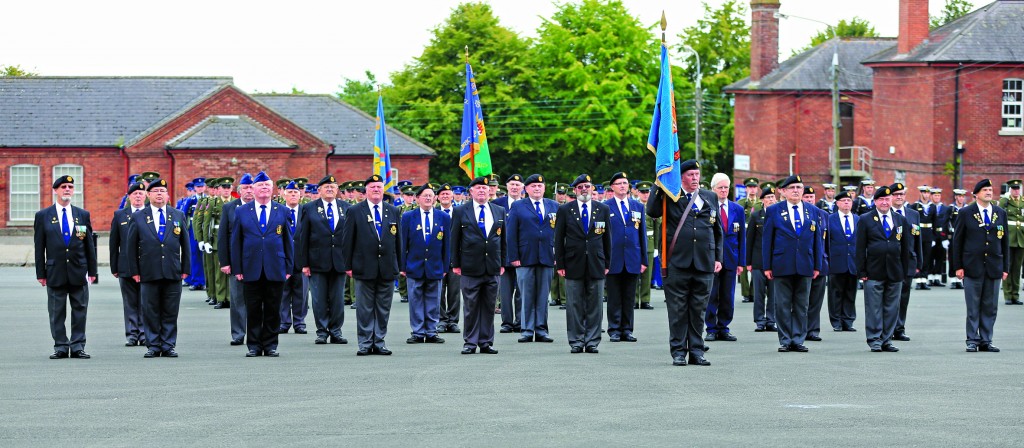 The Minister in welcoming past servicemen and women confirmed the Defence Forces were committed to our veterans:
The Minister in welcoming past servicemen and women confirmed the Defence Forces were committed to our veterans: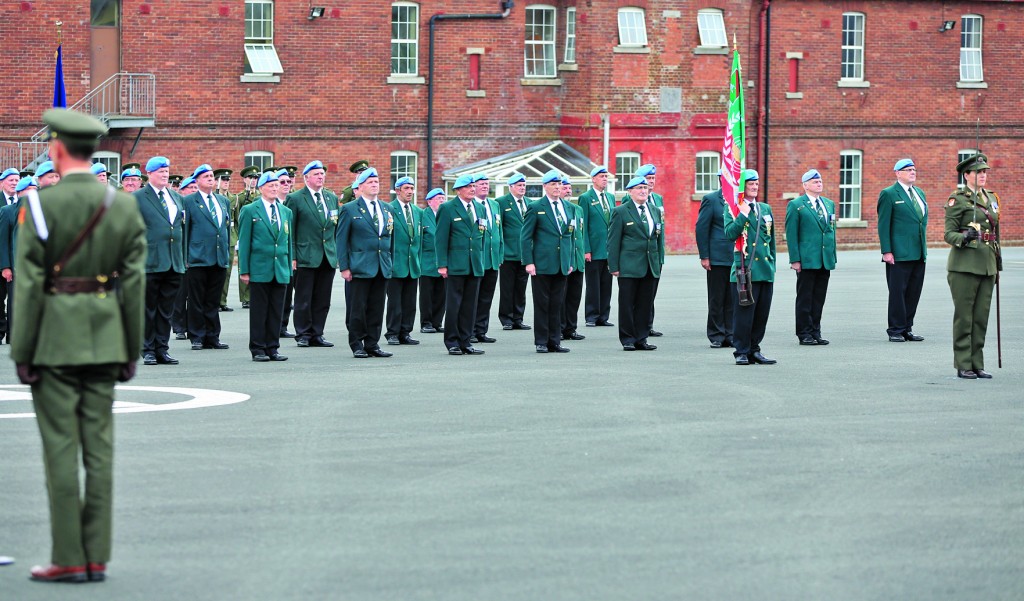 The Minister complimented the Defence Forces on our 54-years of international peacekeeping:
The Minister complimented the Defence Forces on our 54-years of international peacekeeping: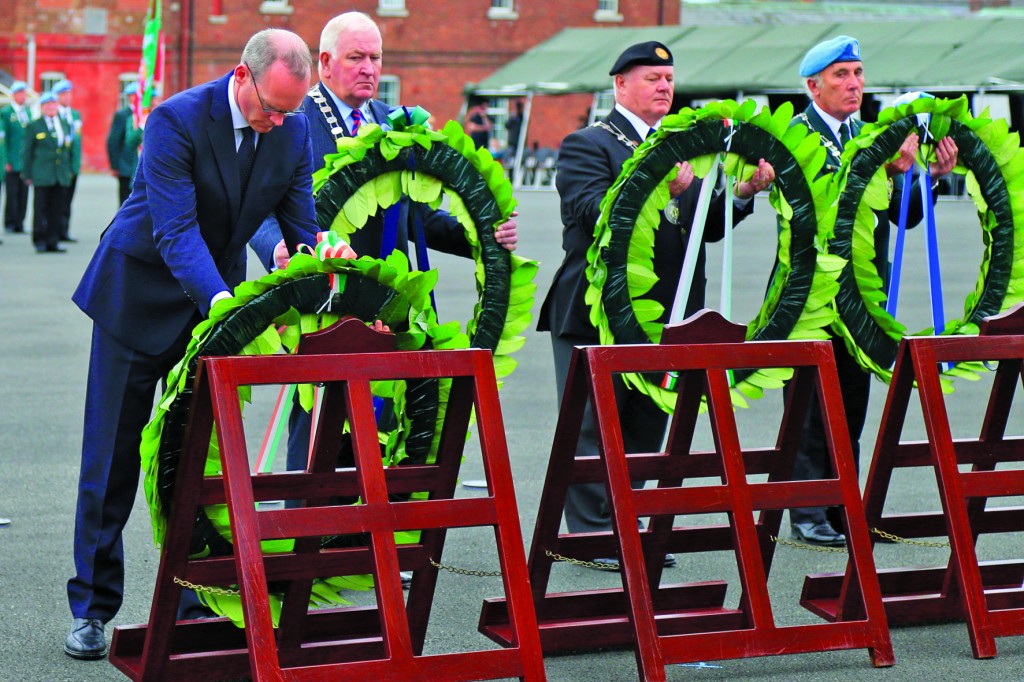 The Minister finished by paying tribute to the 86 members of the Defence Forces who died on operations at home and abroad in the service of their country, “They paid the ultimate price in the cause of peace”. The day was finished off with light refreshments and displays of current weapons and vehicles and also a display of historical vehicles and weapons brought in by the Irish Military Vehicle Group (IMVG).
The Minister finished by paying tribute to the 86 members of the Defence Forces who died on operations at home and abroad in the service of their country, “They paid the ultimate price in the cause of peace”. The day was finished off with light refreshments and displays of current weapons and vehicles and also a display of historical vehicles and weapons brought in by the Irish Military Vehicle Group (IMVG).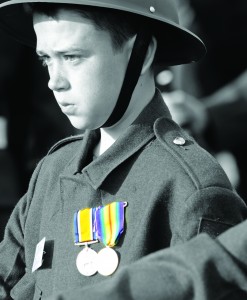
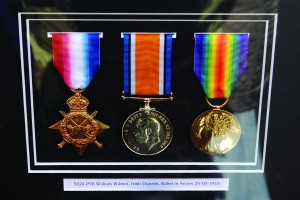
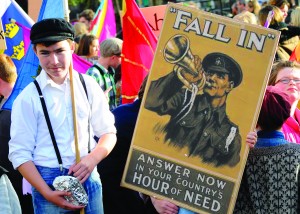
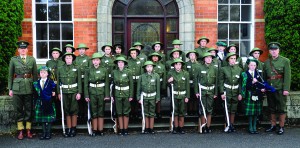 The parade of 70+ students and teachers followed by a hundred or more townspeople marched out towards the train station. Upon their arrival a pair of cavalry vehicles greeted them, a Scorpion CVRT and Mowag Piranha MkIII under the command of Lt Donacha Lenihan, 1 ACS, DFTC.
The parade of 70+ students and teachers followed by a hundred or more townspeople marched out towards the train station. Upon their arrival a pair of cavalry vehicles greeted them, a Scorpion CVRT and Mowag Piranha MkIII under the command of Lt Donacha Lenihan, 1 ACS, DFTC.